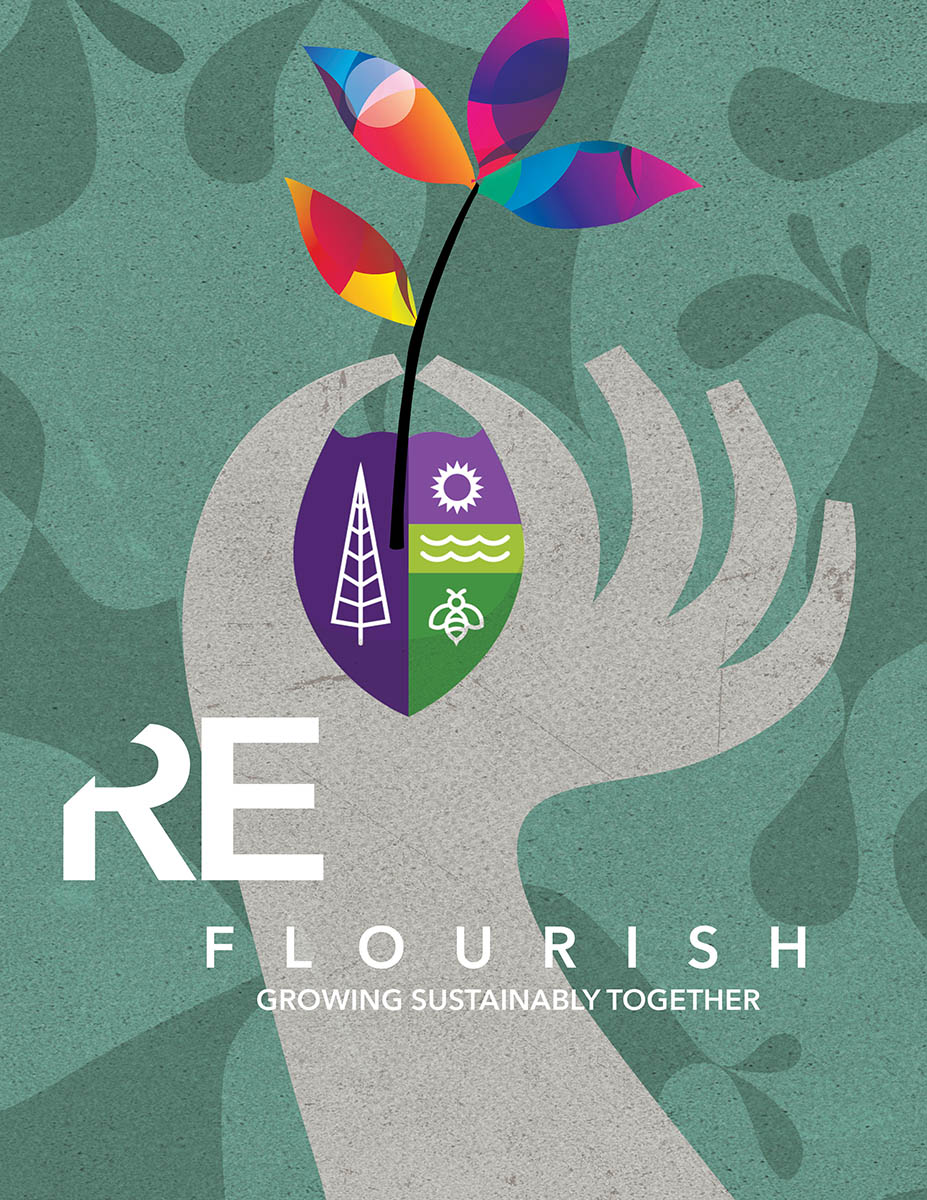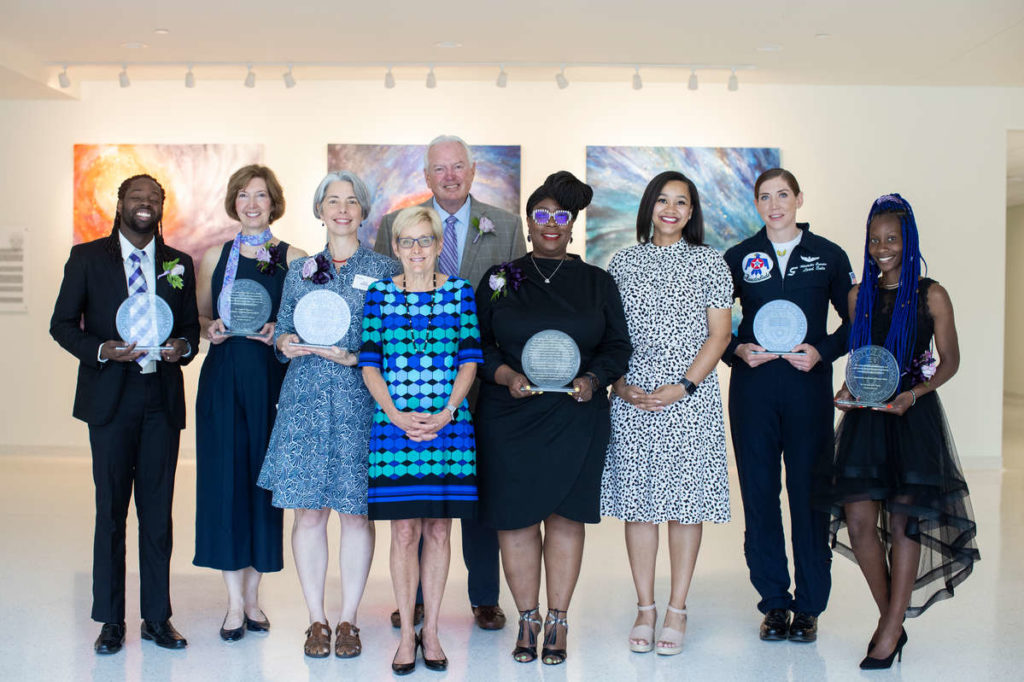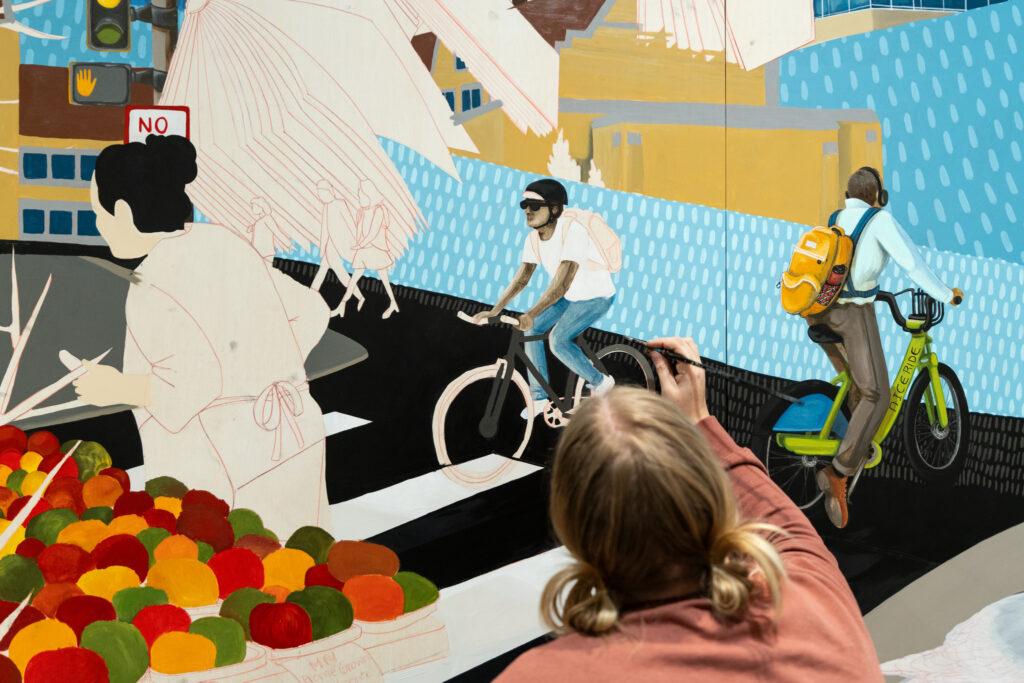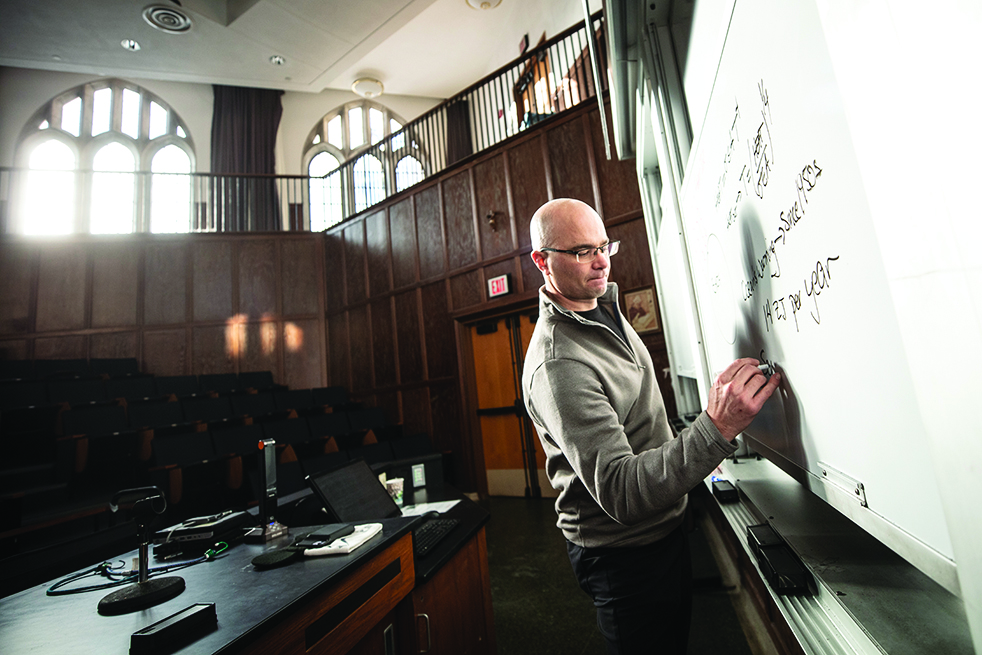Making strides in sustainability is a campuswide effort.
While purple is the brand color for St. Thomas, when it comes to sustainability the university is pure gold.
This spring, four years ahead of the schedule outlined in the St. Thomas 2025 plan, the university earned a STARS gold rating for its sustainability achievements. And earlier this academic year, Tommie East Residence Hall was awarded a prestigious LEED Platinum certification for sustainable building design and construction.
STARS, the Sustainability Tracking, Assessment & Rating System overseen by the Association for the Advancement of Sustainability in Higher Education (AASHE), measures and encourages sustainability in all aspects of higher education including academics, campus engagement and operations.
“We have been working hard at achieving the STARS gold rating,” said Assistant Director of Campus Sustainability and Sustainability Advisory Council Chair Amir Nadav. “When we developed the university’s sustainability strategic plan, we were very intentional about linking our goals to what we learned from the university’s 2018 STARS report. The rating is a great affirmation that our process worked, even better than we expected.”
Making a plan to create change
Many on campus are committed to making it a more environmentally aware place. Nadav, through the Office of Sustainability Initiatives and in partnership with the Sustainability Council, launched a universitywide brainstorming and visioning process in the fall of 2018 to receive input from across the community. Initiatives and goals were identified. The first universitywide sustainability strategic plan was presented to the Board of Trustees in fall 2019.
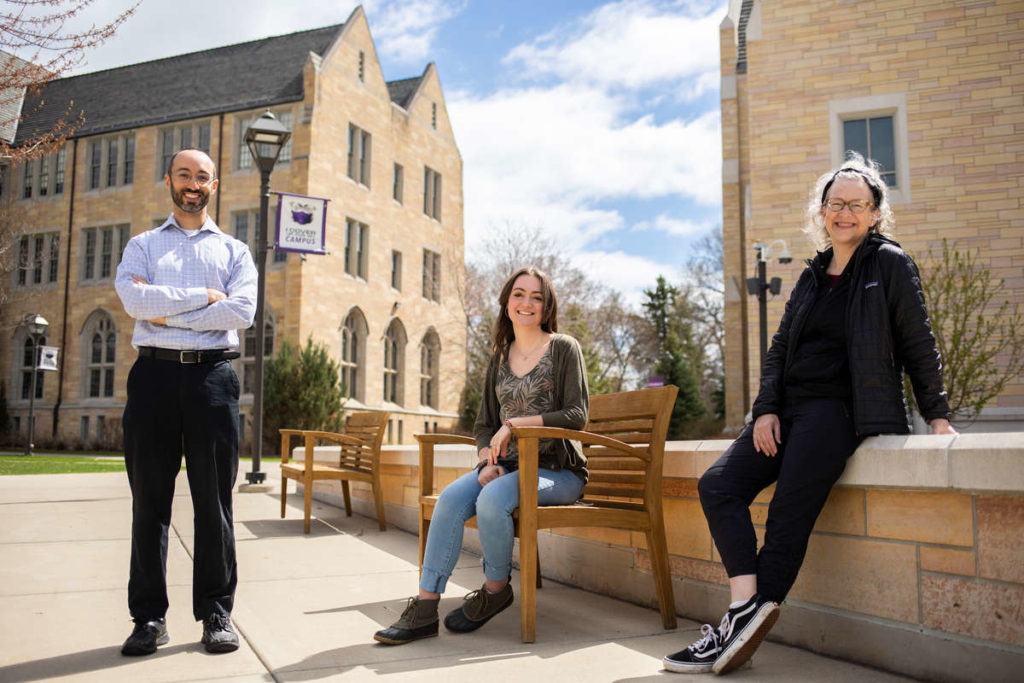
The five-year plan stems from 18 months of assessing campus and exploring ways to integrate sustainability into St. Thomas’ culture and align it with the university’s mission and Catholic identity. It includes the goal of achieving carbon neutrality by 2035.
In 2020, the Undergraduate Student Government released a complementary set of intentions. The Zero Waste Resolution has a long-term goal of making the university a zero-waste campus. Currently, about 60% of university waste is donated, recycled or composted. TreeZero paper made from recycled sugarcane waste fiber is available for use by students and employees.
The university also has received accolades in the environmental arena for its transportation and community engagement. It has installed several bike repair stations, indoor secure bike parking and electric vehicle charging stations on campus within the past year.
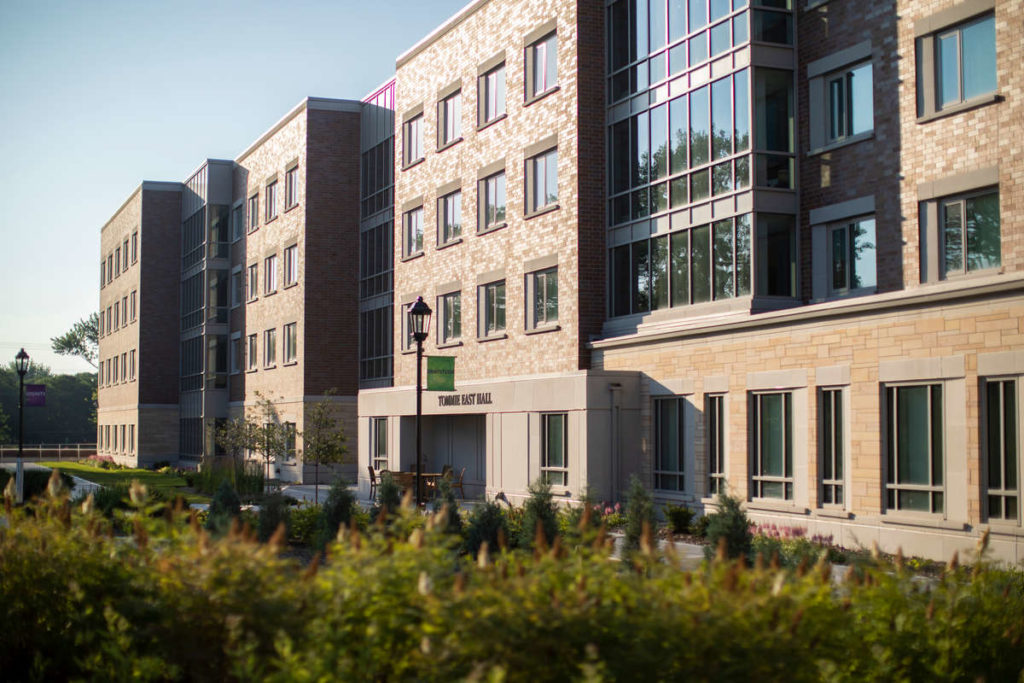
Morning light falls onto Tommie East Residence Hall on July 5, 2021. Photo by Mark Brown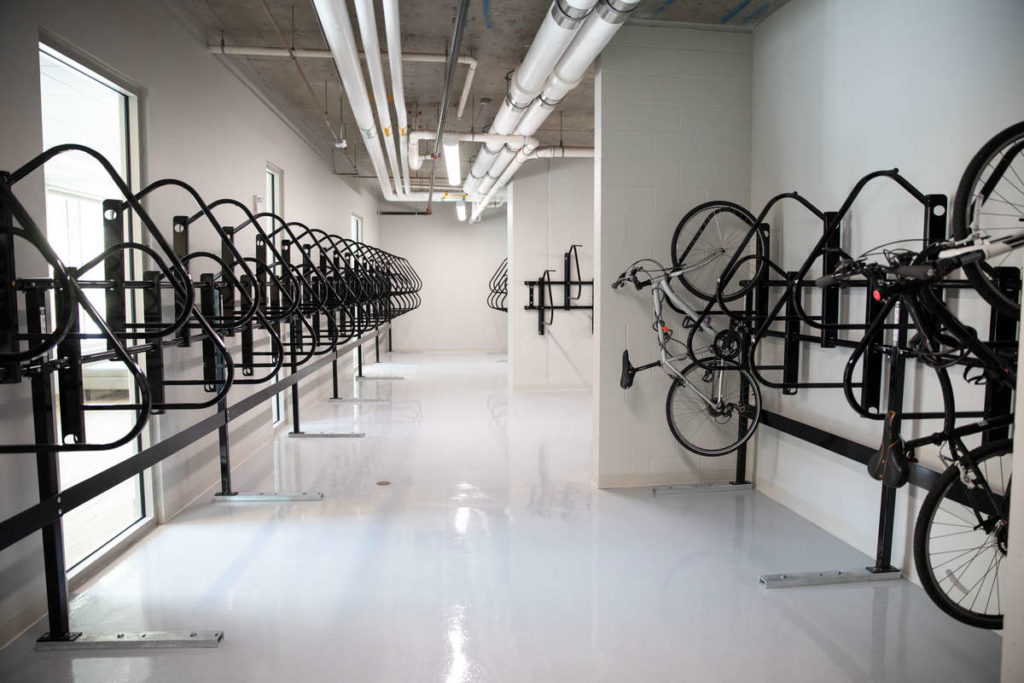
A bike storage area in Tommie East Residence Hall on Aug. 26, 2020. Photo by Mark Brown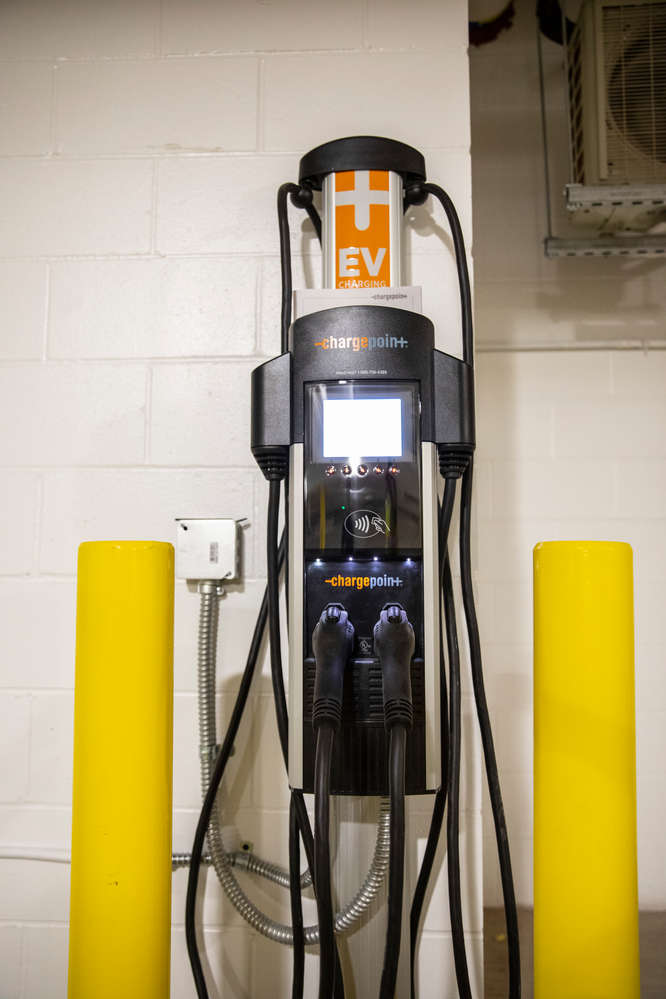
An electric vehicle charging station in the parking garage of Tommie East Residence Hall on Aug. 11, 2020. Photo by Mark Brown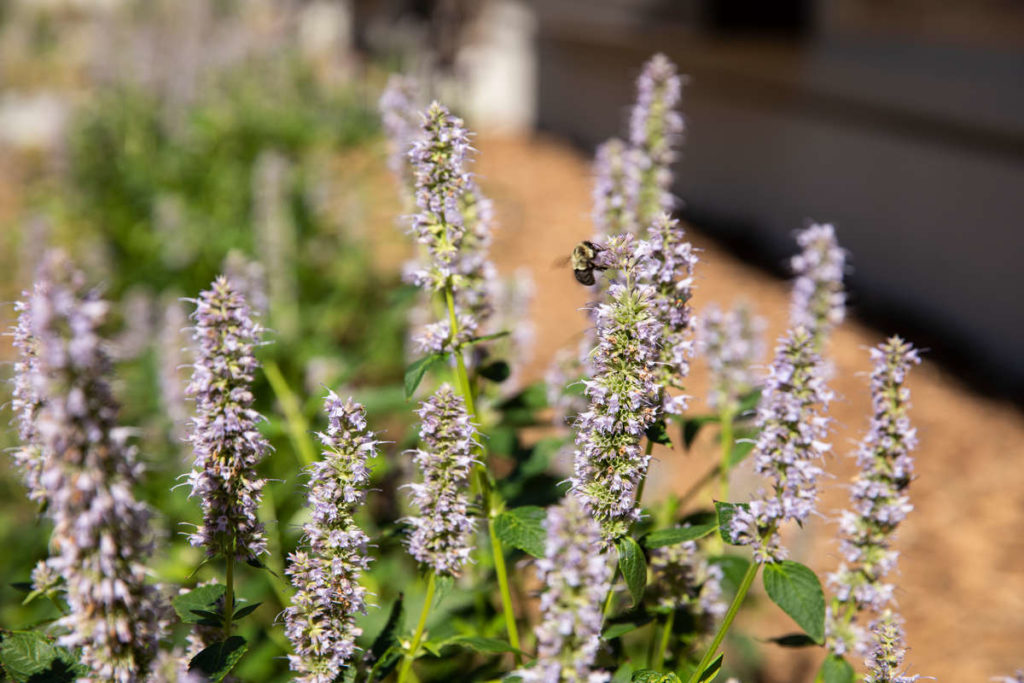
A perennial garde noutside the Tommie East Residence Hall in St. Paul on August 11, 2020. Photo by Mark Brown
Living sustainably on campus
Tommie East, a 2020-built residence hall, became one of only seven mid-rise residential buildings in the world to certify Platinum under the rigorous LEED (Leadership in Energy and Environmental Design) v4 new construction rating system. This most widely used green-building rating system in the world is considered an international symbol of excellence.
Residents of the eco-friendly building can truly say they live in one of the country’s greenest residence halls. The building received high marks for several features, including collection of compostable waste, carpet made from recycled content, over 8,000 square feet of vegetated roof area and energy efficiency above industry standards.
“St. Thomas is doing a lot with sustainability. It’s really exciting,” said Ariana Porcello ’23, the Undergraduate Student Government Sustainability Representative, elected by her peers. “I always say, get involved. Take action because there are so many opportunities to do that at St. Thomas.”
Students annually select a sustainability representative to Undergraduate Student government, lead multiple student clubs to address sustainability, plan Sustainability Week around Earth Day, and participate in a Sustainability Living Learning Community through Residence Life. The only way change will happen, Porcello said, is if people step up and work together.
Collaboration yields results
As sustainability continues to be planted into the St. Thomas landscape, it takes the efforts of many for the seed to grow.
“There were just pockets of individuals who wanted to do things greener, so there were a lot of grassroots efforts,” explained Elise Amel, department chair of earth, environment and society, director of the Office of Sustainability Initiatives and professor of psychology.
However, individual efforts in past years were more decentralized and grassroots than the university’s current approach. With collective efforts and policies great progress was made. The university continues to explore ways of improving sustainability.
“It’s really exciting to see the university embracing sustainability and connecting it directly to the core of our identity and our mission to advance the common good,” Nadav remarked.
These personal choices that we make to address sustainability are important, Amel explained, but where the impact will be greatest is institutionally.
“You don’t want to stop doing the personal thing, but you also want to make a bigger impact at the institutional level,” Amel added.
